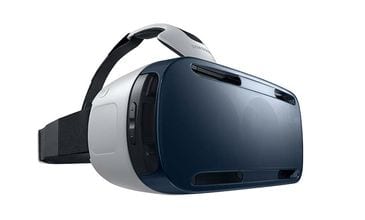 I love creative technology and consider myself a futurist.
I love creative technology and consider myself a futurist.
With the arrival of Ketchum VR, my mind has been captivated by the current and seemingly limitless future possibilities of VR.
In the communications world, we are at a new tipping point toward real innovation in how we engage with audiences. Thanks to virtual reality technology, we won’t only be producing innovative content, but we’ll also be designing fully immersive consumer experiences.
Just as mobile technology transformed the way we reach consumers and influencers, so too will VR. We will quickly move from being early adopters to the leading change agents that facilitate the adoption and mass-market penetration of VR. Ten years from now, the engagement landscape will look drastically different. This is only the beginning!
Here are five inspired predictions for how VR will transform a variety of industries and the ways they engage (click to tweet):
1. Hospitality and Tourism:
Planning that next vacation getaway? The hotel brand experience will start before you arrive. VR will allow you to experience the exact layout of your hotel room before you book it, and may even allow you to personalize it. Virtual concierges could also become the norm to help enhance your vacation experience beyond just your lodging.
In the tourism industry, VR could allow you to see the places around the world you are interested in like the breathtaking waterfalls in Maui, the latest attractions at Disney World, and the glory and grandeur of the Champs-Élysées. As with social media in its current state, VR content will also become highly shareable.
2. Fashion Forward:
The virtual runway will become a mega-event for fashionistas. As we’ve seen with the power of live video streaming, real-time experiential events will be the next step in the evolution of social media marketing. With VR fashion bloggers, influencers and brands could only be a headset away from the latest trends. As consumers begin to shop for clothing and accessories virtually, creating and share their own ideas and inspiration in immersive Pinterest-like worlds, fashion trends are bound to grow exponentially.
Trends and commerce becoming more visual seem all but inevitable no matter if you are in a store or in the comfort of your own home.
3. Health & Wellness:
Changing health and dietary habits present ongoing challenges but, thanks to VR, making smarter choices will become easier in the future. For example, imagine virtually interacting with meals, getting real-time nutritional information and learning more about risks, treatment and prevention of diseases. With VR, health & wellness will become more tangible and empathetic.
4. VR Bots:
VR messenger bots will change the way consumers interact with brands on social networks like Facebook. These types of bots will help create more conversational and human experiences for consumers that will go beyond transactional commerce. As A.I. (Artificial Intelligence) becomes smarter, VR bot interaction between man and machine will become even more personalized, and inevitably indistinguishable from it’s flesh and blood counterparts.
5. Sponsored Content & Native Advertising:
Inevitably, VR worlds will take on a mix of PESO (paid; earned; shared; owned). Imagine exploring the aforementioned virtual hotel room or lobby. You are completely transported, free to interact with branded objects and unlock hidden deals within your enhanced experience. That’s why brands that integrate “easter egg” content into gamified exploration can create deeper connections with consumers by offering them incentives and opportunities to unlock deals and discounts within their branded virtual worlds.
In the end, VR will not only change how we engage with consumers, it will transform the essence of how we design immersive content. The demand for improved human interaction design will be imperative for making VR a “head-and-heart” experience. As the VR landscape becomes more saturated, a smart and innovative creative strategy will become even more paramount to brands that need to break through the noise.